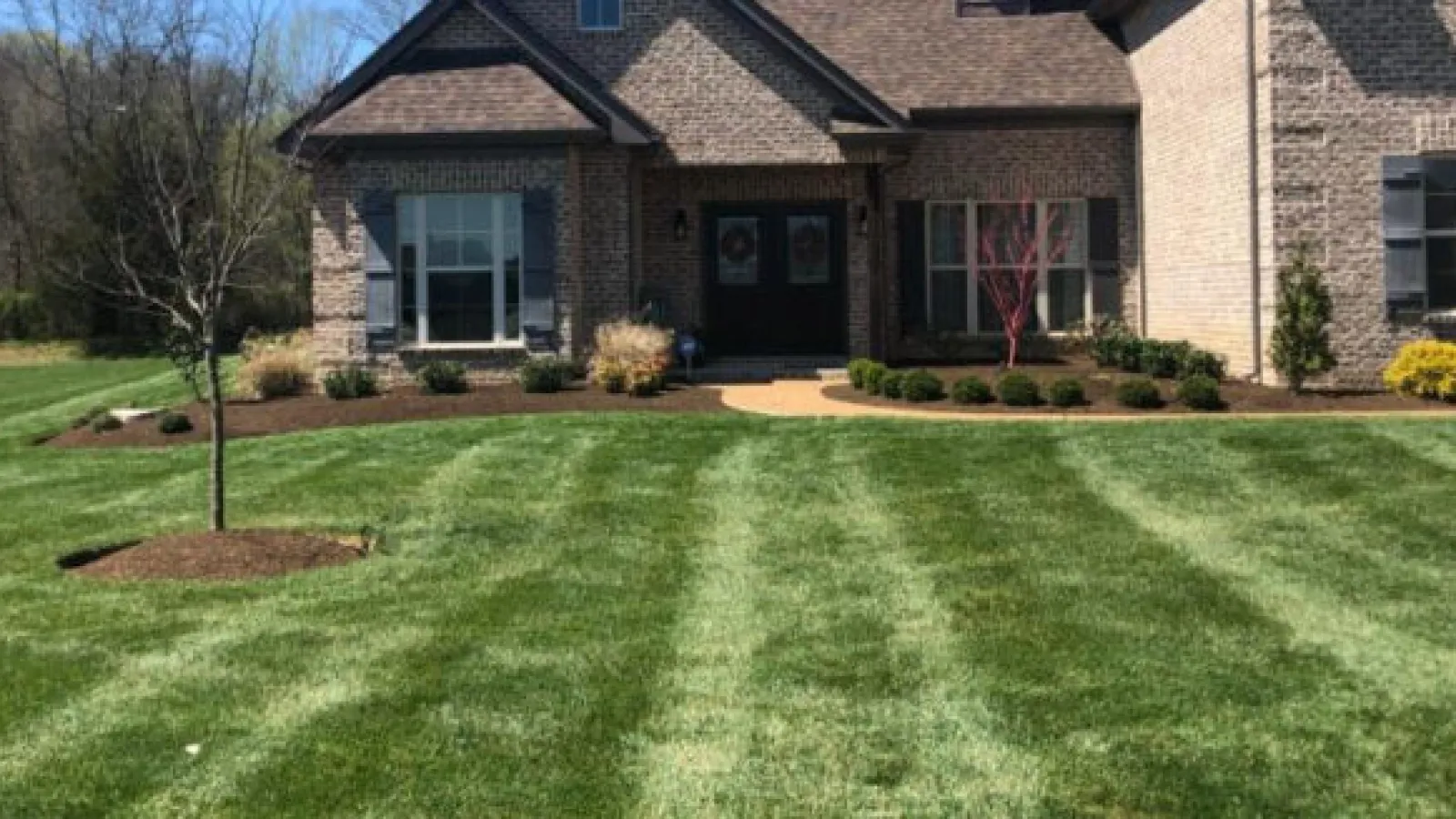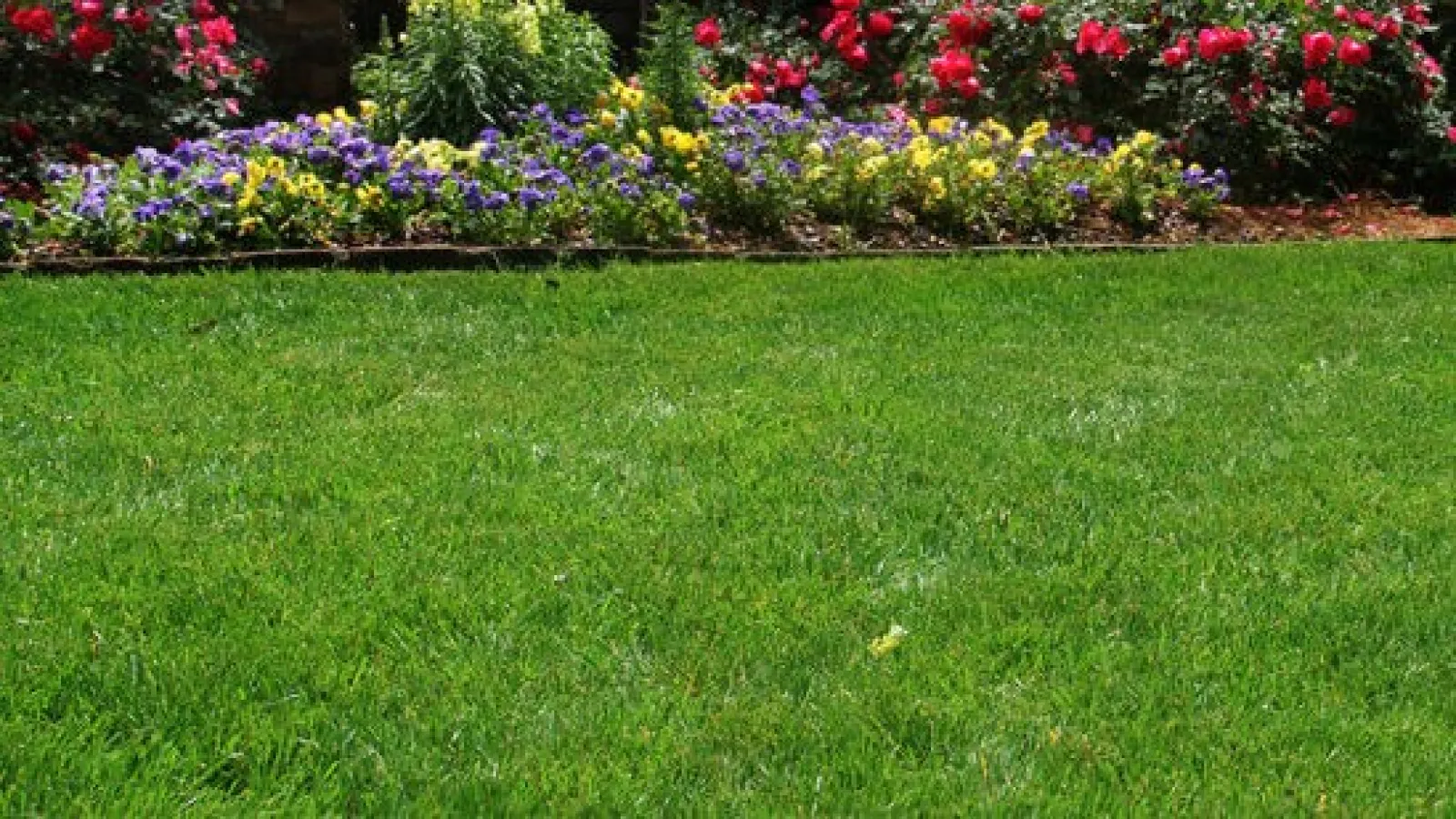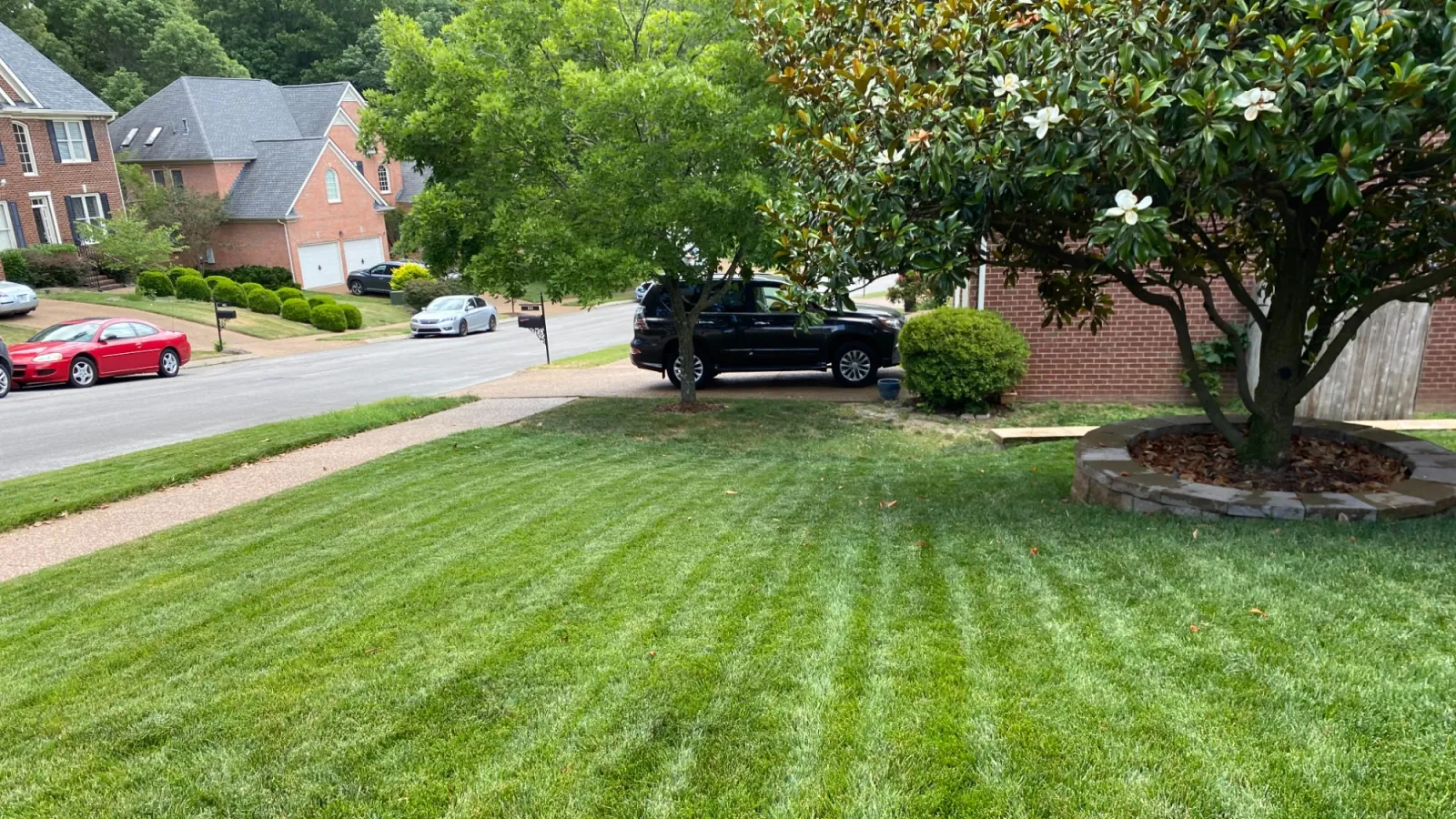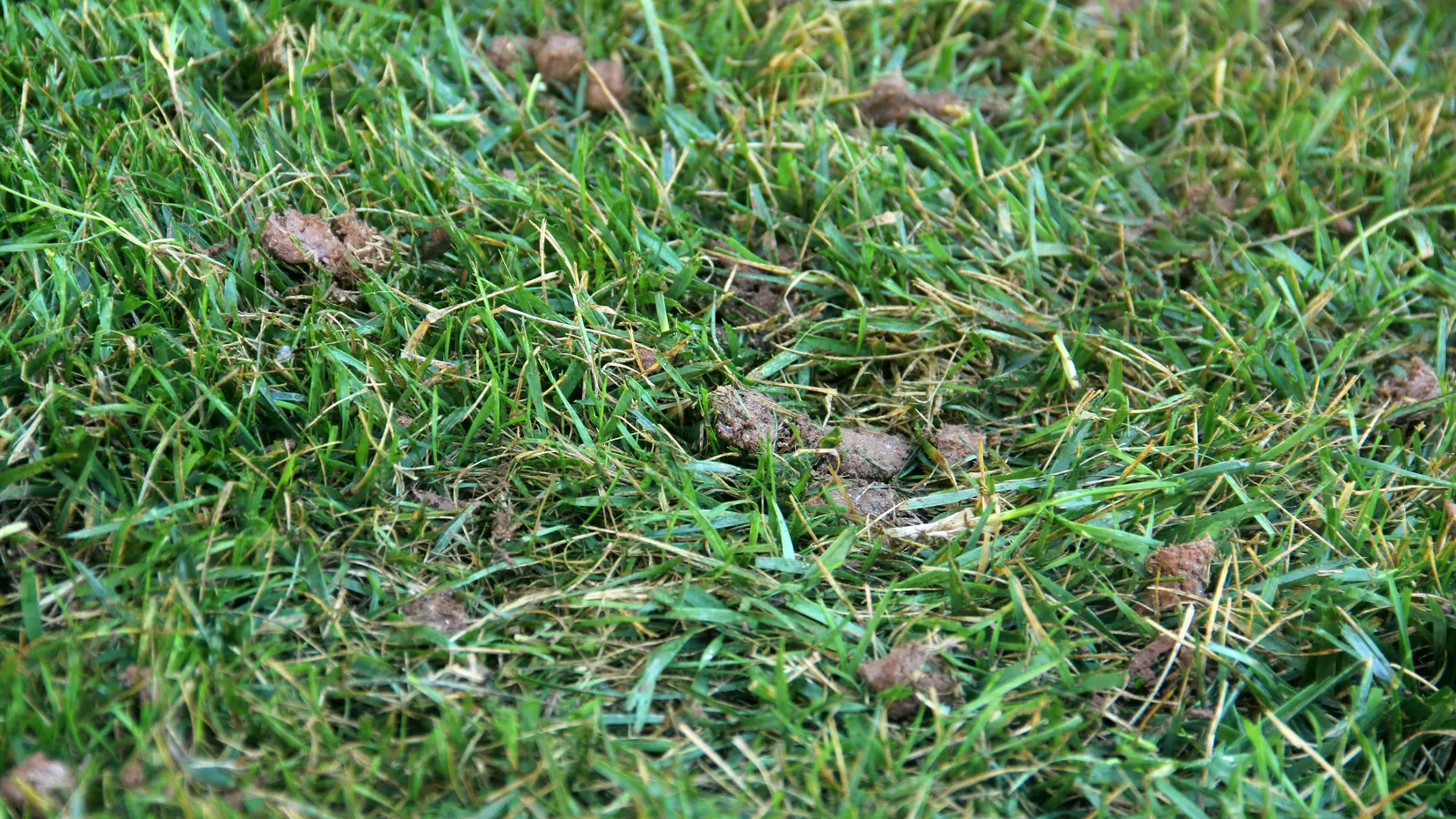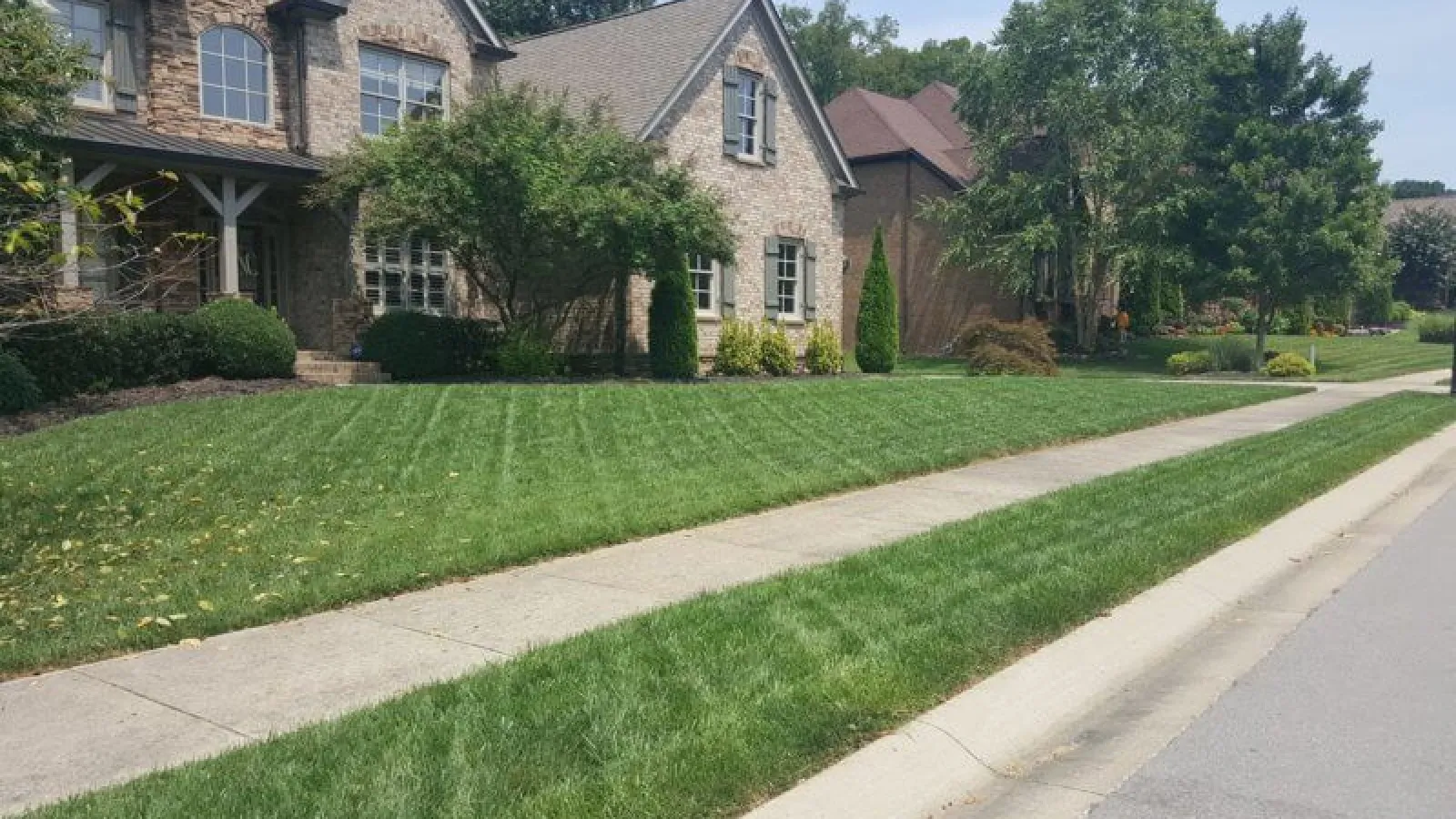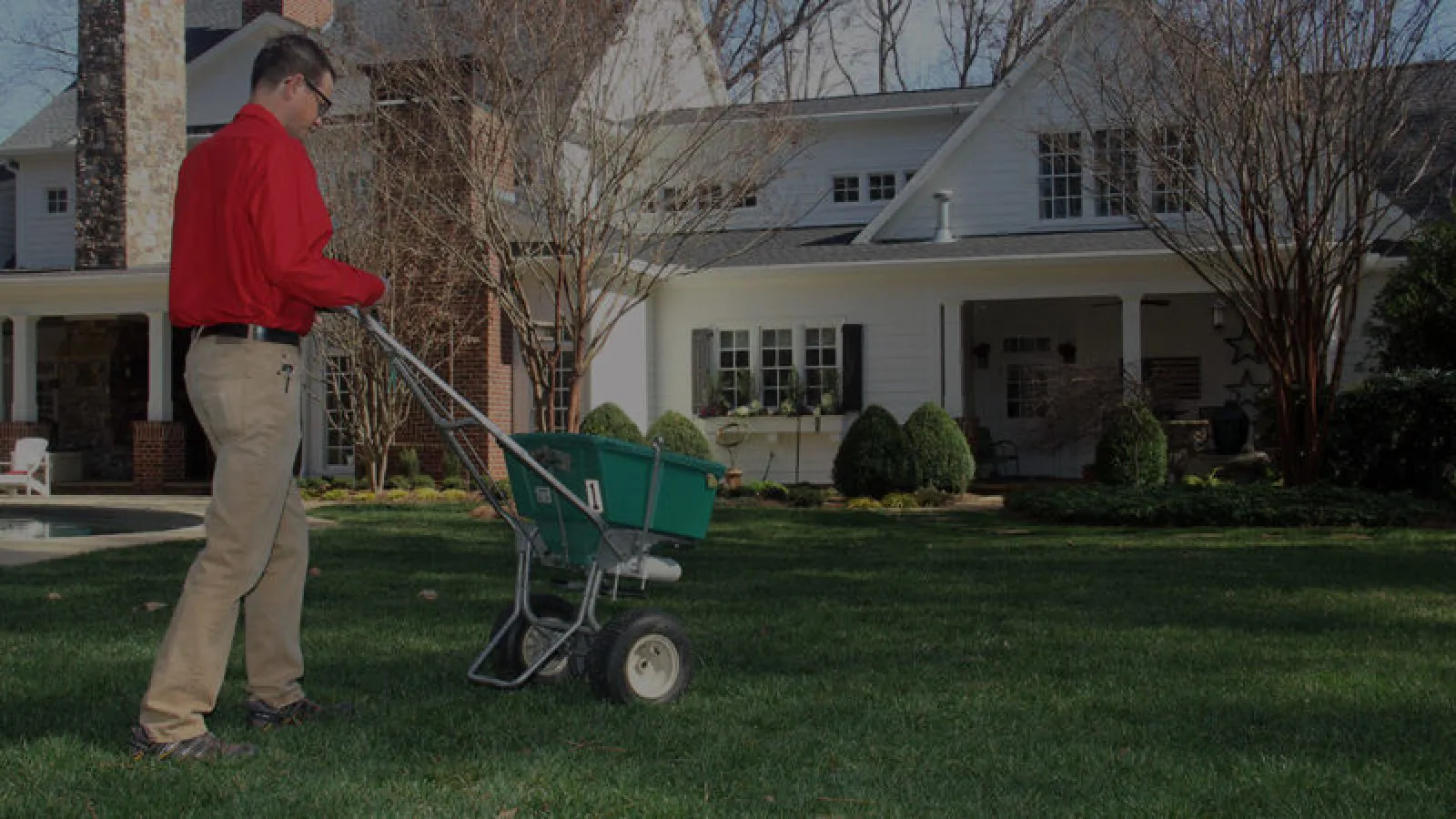Caring For Your
Fescue Grass
Helpful tips and information about your Fescue lawn
Fescue Grass
A Fescue grass lawn requires the most maintenance of any grass. While it is one of the few shade-tolerant turf options, it has major drawbacks as it is a cool season grass growing in an extremely hot and humid environment for 4 months a year. Care in the cooler months is basic: water as needed, mow as needed, and treat as needed with fertilizers and weed control. In the hot months, care becomes more critical as this cool season grass is now trying to cope with extreme heat, high humidity, disease, and in most cases drought. Below is a guideline that must be followed to maintain a healthy Fescue lawn year-round and most importantly through the hot months of a Tennessee, Georgia, Alabama, or South Carolina summer.
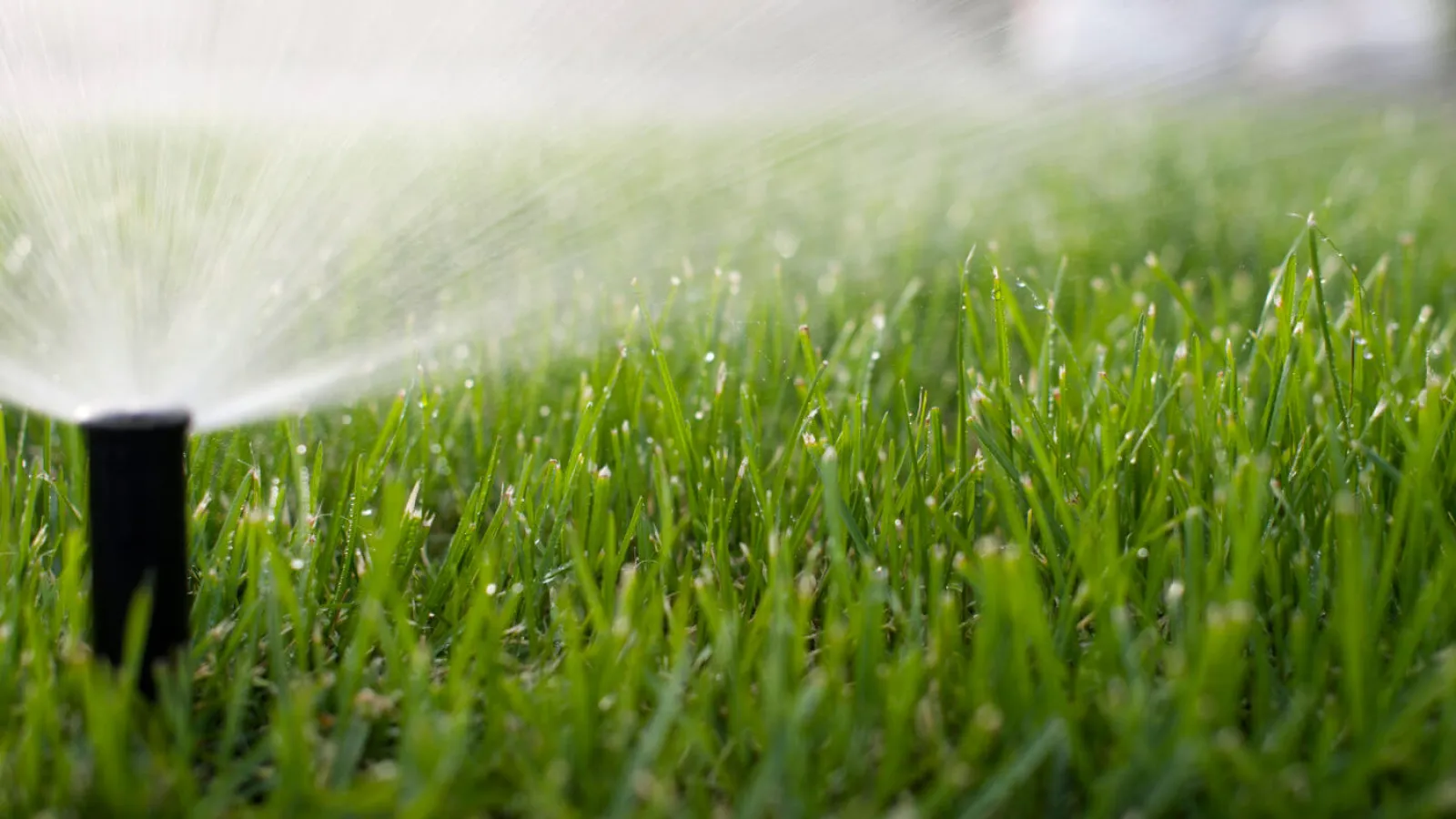
Watering
The most effective way to water any lawn is deeply and infrequently. One hour per zone, one time per week if no rainfall is present. Hours between 3am and 10am are best. This allows your lawn to attain a deep root system while minimizing the moisture period on the lawn. Watering in the morning hours allows the sun to dry the turf. Prolonged periods of moisture on turfgrass, especially during periods of high heat and humidity, encourage disease development. This watering program must be followed for established lawns. To quote Dr. Kim Coder of the University of Georgia, water is 80 percent of the problem with all plants and water is 80 percent of the solution. Watering newly seeded lawns has different initial requirements. Frequent shallow waterings are best for seed germination so carefully follow instructions left by your seeding crew. New seeding requires daily watering of 30 to 40 minutes per zone for a three week period. After this period you can gradually decrease the frequency to every other day, then down to every third day. Weather is not conducive for disease development in the fall so prolonged moisture is not a concern.
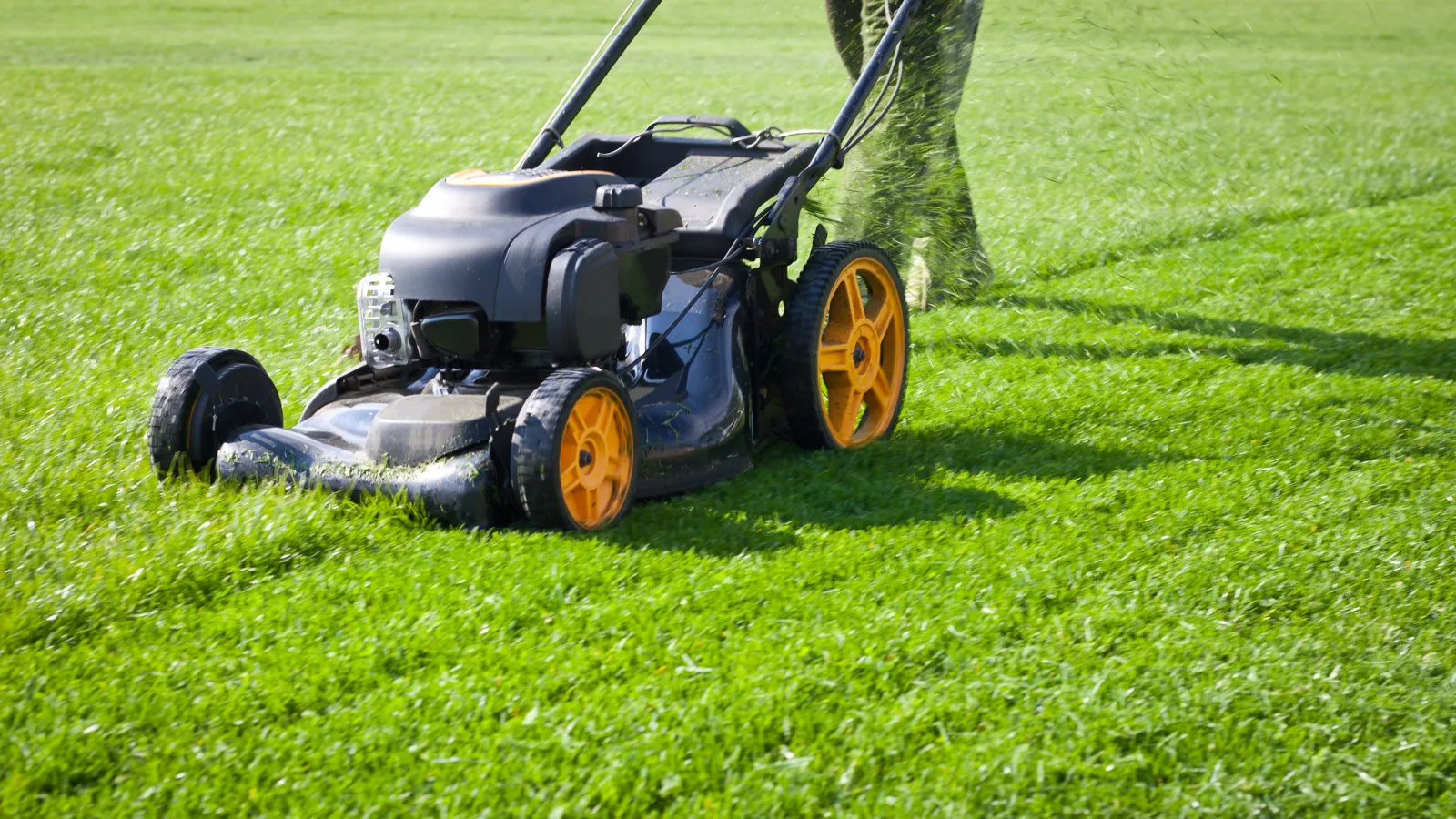
Mowing
Mowing should be done at least weekly throughout the year except when new grass is present. When a Fescue lawn is newly seeded it should not be mowed for at least 3 weeks to avoid damaging the new grass with heavy equipment. At all other times, one cut per week will keep it looking its best and prevent issues of cutting off too much at one time. Never cut off more than 1/3 of the grass blade when mowing. Cutting off too much of the blade at once will deplete the plant's energy reserves. Always use a sharp mower blade. A dull mower blade will tear the grass blade and weaken its health making it more susceptible to disease and having a dull browned appearance. The proper mowing height for Fescue is 3.5-4 inches. Keeping Fescue at a height of less than 3.5 inches will show more imperfections in the lawn and allow more room for weeds to germinate. It can also increase the levels of heat stress and susceptibility to disease in the hot months of the year.
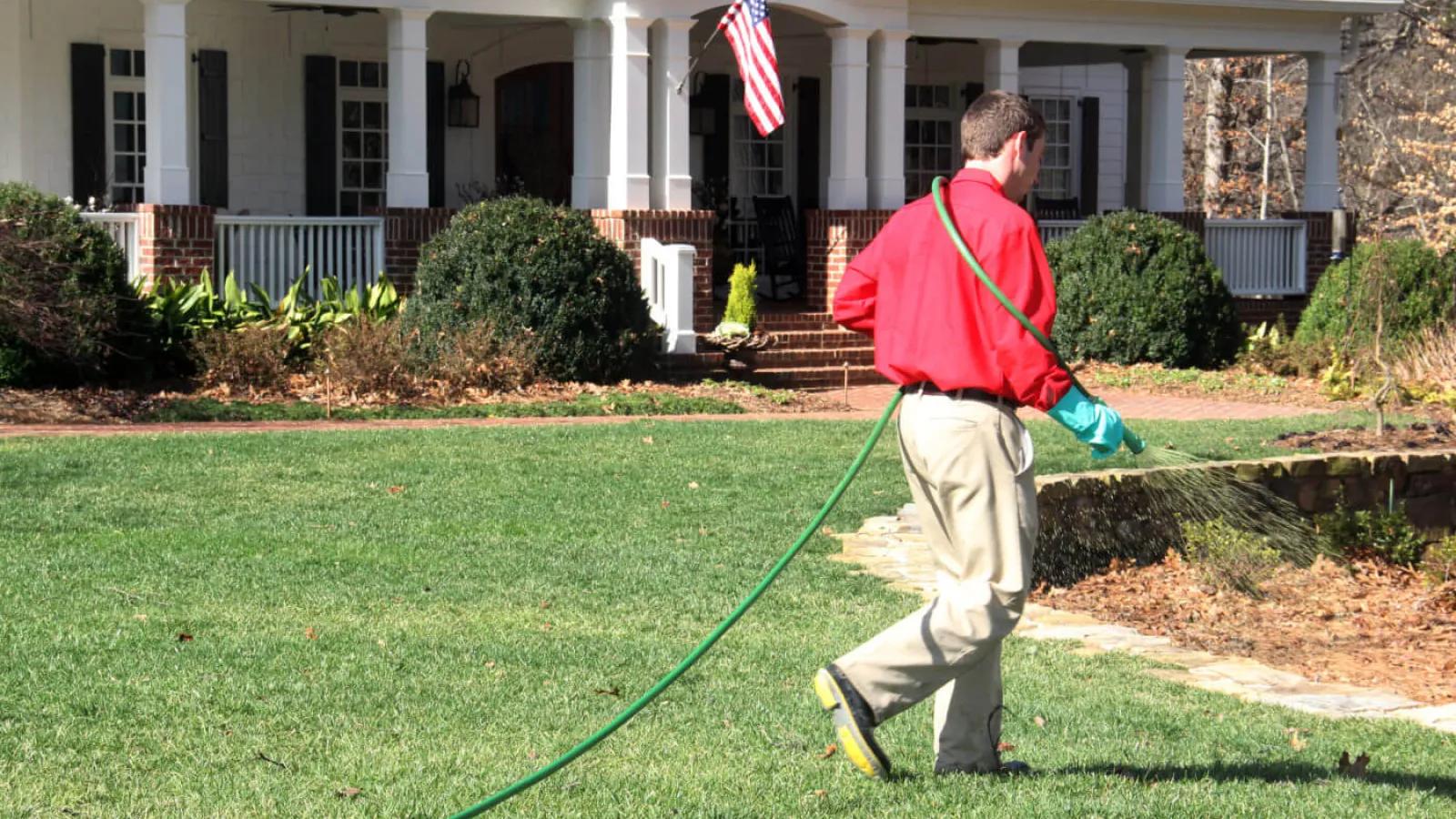
Disease Control
Fungicides, in conjunction with a proper cut height of at least 3 inches, and deep and infrequent watering during the months of May through August are the most critical components of Fescue turf health and sustainability. Properly timed applications of fungicides will protect Fescue lawns in the South from Brown Patch Disease. Each fungicide application will effectively protect the plant from the disease for about 30 days. Any lapse in fungicide applications must be avoided as this disease can spread quickly through an unprotected lawn in a short period of time under the right environmental conditions.
Many times, customers decide to skip or hold off on a fungicide application-this disrupts the timing of their program and can lead to major damage to the lawn. Other times customers will get properly sequenced fungicide applications, but neglect to water the turf adequately which can lead to die out from heat stress and drought. We recommend 1 inch of water 1-2 times per week in the morning hours.
Customers who follow this regimen often do not need to reseed the lawn in the fall, effectively creating a cost trade-off while keeping a nice-looking lawn through the summer.
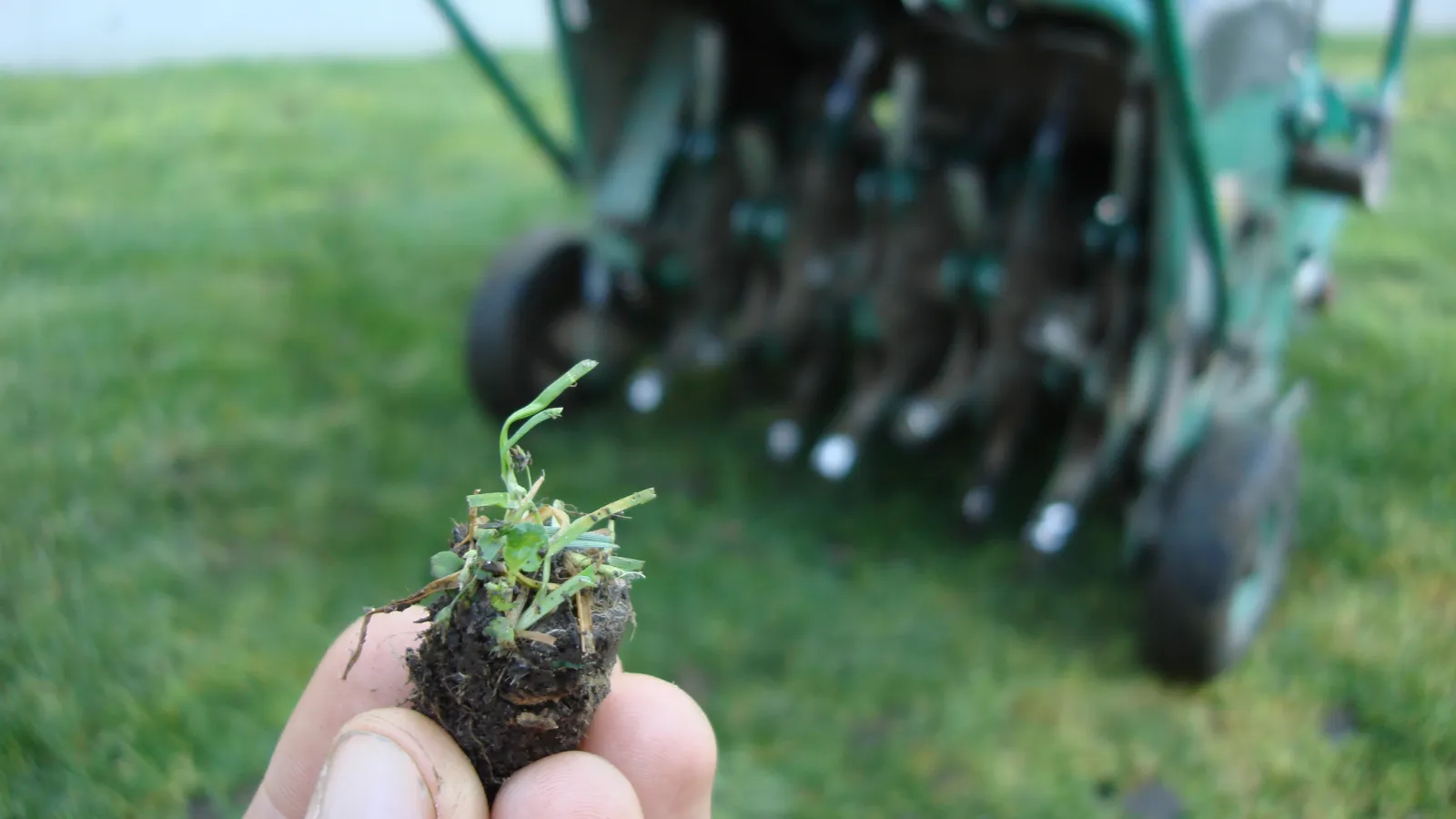
Core Aeration & Seeding
Core aeration & overseeding is one of the most important things you can do for your Fescue lawn. Core aeration & seeding promotes growth in the bare area and helps your lawn better resist heat, drought, and disease. Aeration is the removal of small plugs of dirt from the lawn. This allows oxygen, water, and nutrients to get to the roots. Because Fescue is a clump-style grass, it doesn't spread by rhizomes like Bermuda and Zoysia. Its spreading and self-repair ability after damage is limited. Overseeding with our custom blend of Fescue seed helps with new growth.
Fescue FAQs
What time of day should I water Fescue grass?
Watering between the hours of 3am and 10am are best. This allows your lawn to attain a deep root system while minimizing the moisture period on the lawn. Watering in the morning hours allows the sun to dry the turf.
How often should I mow?
We recommend mowing at least once a week during the year except when new grass or seed is present.
What is the proper height for Fescue?
The proper mowing height for your Fescue lawn is 3.5 to 4 inches.
What happens if I cut Fescue too short?
Keeping Fescue at a height of less than 3.5 inches will show more imperfections in the lawn and allow more room for weeds to germinate. It can also increase the levels of heat stress and its susceptibility to disease in the hot months of the year.
Should I aerate and seed my Fescue lawn?
We recommend core aeration and overseeding Fescue once a year in the fall, just before it goes into its active growing season. Because Fescue is a clump-style grass, overseeding is important to fill in bare areas in the lawn.
Does my lawn need fungicide treatments?
Yes! Brown patch fungus is one of the most destructive diseases to Fescue. The damage of this soilborne disease first appears as circular areas of brown and dead grass surrounded by a narrow, dark ring. Brown patch fungus can return year after year and will continue to germinate and infect healthy grass if not controlled.
